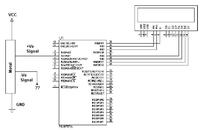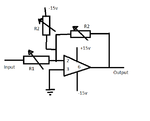weichun
Newbie level 2
Currently, I have a metal plate which giving me voltage difference between two wire signals (Different force resulting different value). I’m trying to measure the ADC value with those two signal wires with PIC microcontroller but I’m having difficulties in obtaining the ADC value. I noticed that the conventional method of measuring ADC is to connect the +VE signal to the PIC (eg: Pin A1) with reference to the GND. But, right now I’m having two signal wires that if I’m connected one of them to the GND, it will results in constant voltage. When one of the two wires does not connected to the GND, it will gives voltage references.
Could somebody advice me on what method should I take in order to solve this matter? I believe it must be related to some signal conditioning circuit before connecting to the PIC microcontroller. Most topic discussed I’m noticed is regarding on shifting the +ve and –ve value but I don’t know if possible the theory applies here. Thanks in advanced.
Could somebody advice me on what method should I take in order to solve this matter? I believe it must be related to some signal conditioning circuit before connecting to the PIC microcontroller. Most topic discussed I’m noticed is regarding on shifting the +ve and –ve value but I don’t know if possible the theory applies here. Thanks in advanced.

